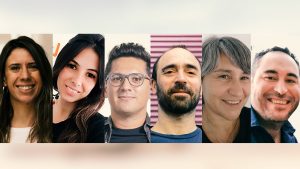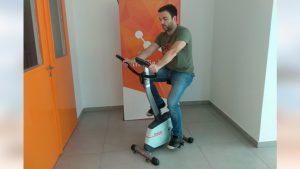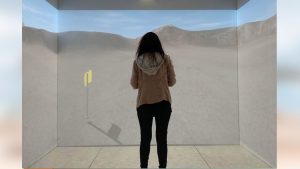- Noticias / CONICET research shows that 25 minutes of physical activity improves spatial memory
BIOLOGICAL AND HEALTH SCIENCES
CONICET research shows that 25 minutes of physical activity improves spatial memory
This is revealed by a study in which 98 volunteers participated. This information could help design strategies to improve cognitive function in patients with Alzheimer's and other neurodegenerative conditions.
Compartir en
redes sociales
Although there is a consensus that physical exercise benefits memory, it is not entirely clear how the type of exercise, its duration, and when it is performed impacts this cognitive function.
CONICET researchers verified that 25 minutes of cycling exercise improves spatial memory. To do this, they designed a new memory test within a virtual reality environment and after evaluating 98 volunteers (between 18 and 35 years of age) they observed that physical exercise improves this cognitive function. The results of the work were published in the journal iScience.

Research team: Daniela Ramírez Butavand (left), Florencia Rodríguez, Fabricio Ballarini, Pedro Bekinschtein, Virginia Cifuentes and Cristian Garcı́a Bauza.
Pedro Bekinschtein, also director of the work, CONICET researcher at the Institute of Cognitive and Translational Neurosciences (INCYT, CONICET-INECO Foundation-Favaloro University), research director of the INECO Foundation and professor at Favaloro University, indicates: “Our results They not only open avenues to improve the clinical approach to neurodegenerative diseases but also the possibility of a simple non-pharmacological intervention for the natural decline in memory with aging. However, many more studies still need to be carried out to be able to apply this knowledge in the clinic.”
Immersive experience
Ballarini, Bekinschtein and colleagues began the research by designing a new spatial memory test within a virtual reality environment for humans that provides a greater sense of immersion than tasks performed with computer screens.
To do this, they worked together with the Media.Lab group of the PLADEMA Institute (CICPBA-CNEA-UNICEN), where they have used virtual reality technology for training and other adjacent areas for more than 20 years. “It was a challenge to unify criteria between two areas as dissimilar as biology and technology, but that is what is interesting about interdiscipline,” says Cristian García Bauza, director of Media.Lab and CONICET researcher at the PLADEMA Institute.
The objective of the work was to evaluate in a total of 98 volunteers the effect of physical activity on the consolidation and recovery of spatial memory after performing a novel virtual reality task. The learning consisted of remembering the position of two flags belonging to an imaginary circle within a virtual landscape. The task presented two different conditions: a difficult one, in which the flags were closer to each other (separated by an angle of 20 degrees), and an easier one in which they were further apart (separated by an angle of 40 degrees).
After 25 minutes of stationary cycling after learning, sedentary people benefited when it came to remembering the position of the flags. “Probably because that brief period of exercise specifically benefited the spatial memory that was being consolidated at that time. This effect was not found when the physical activity was carried out before the memory was evoked,” said Daniela Ramírez Butavand, first author of the study and CONICET doctoral fellow at the INCYT.
For her part, Florencia Rodríguez, who is also a CONICET doctoral fellow and first author of the study together with Butavand, adds: “the task could be carried out in a controlled and plausible environment of repetitions, ensuring that no errors or external vices were introduced, recreating a universe "virtual computer created, very similar to the real one and easy to adjust in each protocol carried out in the tests, thus demonstrating the success of the collaboration of the work."
For Ballarini, one of the original points of the recent work “is that most research is focused on the impact of chronic physical activity (athletes or people who practice sports regularly) on spatial memory. However, in our study, we also addressed the effect of acute physical activity (that practiced by sedentary people) on this type of memory.”
Meanwhile, Bekinschtein highlights the possible applications both clinically and in everyday life: “Although we know that physical activity is very beneficial for the maintenance and improvement of many cognitive processes, this effect requires, in general, a medium or high for a long time. Sometimes people give up frequent physical activity. Our work shows that a single period of very simple exercise is beneficial for a newly acquired memory. In the future, these discoveries could be used in the clinic and also to motivate people to do physical activity to remember better.”
To carry out the tests and call for volunteers, we had the support of the Student Welfare Secretariat and the Sports Directorate of the National University of the Center of the Province of Buenos Aires (UNCPBA).
Bibliographic reference: Butavand, D. R., Rodriguez, M. F., Cifuentes, M. V., Miranda, M., Bauza, C. G., Bekinschtein, P., & Ballarini, F. (2023). Acute and chronic physical activity improve spatial memory in an immersive virtual reality task. iScience.
https://doi.org/10.1016/j.isci. 2023.106176

